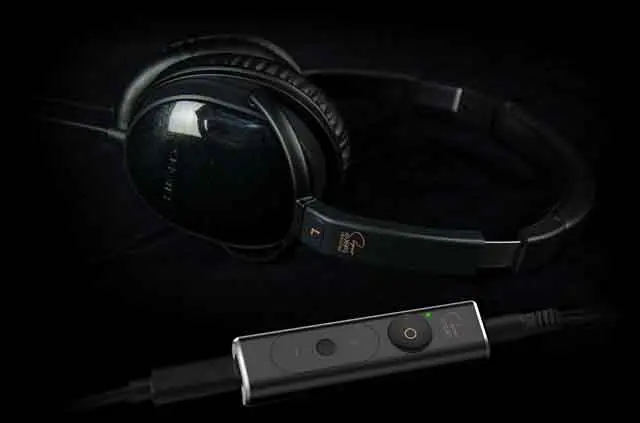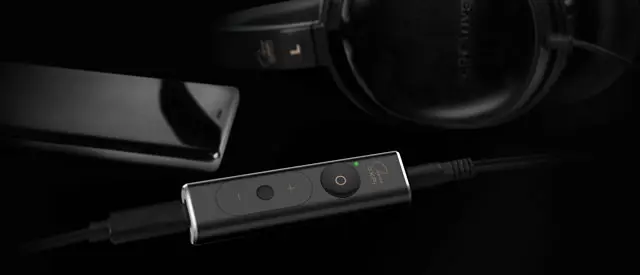Creative has been stagnant since launching SoundBlaster in the 90s which became the de facto standard audio for PCs until sometime in the 2000s when onboard audio started being incorporated into motherboards leading to SoundBlaster being sidelined as an enthusiast product. With no big hits since then, it seemed like the company was doomed to irrelevance.
That all changed at CES 2018.
Unveiling a new amp called the Super X-Fi, Creative’s CEO and founder Sim Wong Hoo claims to have found a universal game-changer in the way we experience audio and that it is the “holy grail” that the industry has been searching for.
Bold claims indeed. Having had the opportunity now to use the Super X-Fi for the past few days, is it really a game-changer? I believe that it is. The holy grail? I’m not sure about that. Don’t get me wrong. It’s really good. Shockingly good in fact but far from perfect.
Now, before I go on, it is important to say that I’m not an audiophile. The reactions I’ve seen from local audiophiles so far are passionately mixed with claims that it “really works” to “snake oil” dismissals.
An impressive capability is the Super X-Fi’s ability to drive headphones with high impedance. How high? Up to 600 Ohms which is very impressive and as the owner of a pair of Sennheiser HD 650 headphones, that makes me very pleased.
I’ve tested the Super X-Fi on both my Windows desktop and my Galaxy Note 9. I used three different headphones/earphones and they are as follows.
V-Moda Crossfade 2 Codex – Not Super X-Fi certified
Sennheiser HD 650 – Super X-Fi Certified
Creative Aurvana Trio Earphones – Super X-Fi Certified
These headphones and earphones can be bought directly from their online store, or you may find a great deal on these on third party websites when they have a sale or being sold used. I got a pair once from a Rakuten promo and they worked will till I dropped them. This Gearbest discount can mean a good price for those not looking to spend exorbitant amounts.
Each of them sounded great in their own right and the Aurvana Trio honestly sounded way better than I expected as well.
Before I get into it, Super X-Fi certification simply means that the amp works best with certain devices that have been submitted to Creative and tuned accordingly. While it is limited to a measly 15 headphones/earphones right now, they do plan to roll it out to more devices in the near future.
Now once again, I’m not an audiophile so if you are looking for an audiophile’s take on these, this isn’t it.
The Demo
There was a slick demo at Creative HQ for early adopters where they explained the technology and process of personalizing the amp. Photos are taken of your left and right ear, your face and an algorithm create a personalized sound profile for you and you alone.
Meaning if friends want to use it, you are strongly urged to create a profile for them but for some silly reason, as of writing, you cannot name each profile (seriously why?) instead they are named based on the date and time you create them.
The demo involved Emu-Teak headphones connected to the Super X-Fi and a really expensive home theatre speaker array. With this carefully curated demo, the Super X-Fi seemed really impressive and was able to hold its own against the speaker array for music, movies, and even YouTube videos sounded great.
Creative markets the amp as producing “holographic audio” and describes it as glasses for your ears and promises that music, movies, and games will all sound way better.
Testing
Buoyed by the great demo, I spent the next few days trying the amp out and the results were a mixed bag.
Movies that had Dolby 7.1 surround sounded amazing but when Netflix was the source, it honestly felt better to have the PC speaker setup set to the stereo with the amp turned on rather than the Creative recommended 7.1 surround sound.
But seriously, movies sounded freaking great. It does recreate that “cinema” audio experience and it is difficult to go back to traditional audio after having experienced this.
YouTube was odd. Videos with a lot of narratives were either echoey and off or as if the narrator was right next to me. Basically, it was either hit or miss. Video games whose developers focused on audio such as Battlefield sounded phenomenal which made it no surprise that the “Battlefield V” trailer was one of the demo videos.
I usually prefer my music from a two-channel stereo source so I may not be the best person to test these so take the following with a pinch of salt.
Music was equally mixed with Rock sounding great or awful, EDM almost universally sounding great, pop sounded off, and classical had mixed results.
Playing Nightwish’s concert live at Wacken 2013 off a FLAC format had solid results but at the cost of de-emphasizing the vocals.
That was a constant issue that I ran across in all the songs I listened to. While the background instruments were empowered and made more clear, the vocals seemed to take a couple of steps backward and sometimes got outright drowned out.
Instrumental songs were not spared as well. The Super X-Fi seemed uncertain of what to emphasize and not for instrumental songs and as a result, certain songs where the artist clearly desired one instrument to be heard clearly over the others lost its clarity.
A good example of this is “Order in the Chaos” by Paul Leonard-Morgan from the “Dredd” movie soundtrack where it became really muddled and confused.
The gaming was interesting. I specifically chose games with 7.1 sound support and genres which actually benefited from having 7.1. For comparison, I have a Sennheiser GSX-1200 gaming amp with a 7.1 surround toggle that I’ve been using for nearly half a year now.
First Person Shooters such as “Doom”, “Overwatch”, “Titanfall 2” and “Battlefield” all sounded great. But which one was better? The Sennheiser amp won out for me. Yeah, the Super X-Fi did an admirable job and if you don’t have a dedicated amp-like me, it will definitely be worth picking one up.
But if you already have an amp and were considering this, I’d recommend trying it out first before taking the plunge.
World of Warcraft sounded both good but a little hollow with some weird sound anomalies. This is usually involving in-game characters who were right in front of you but sounded really faint for some reason but if you backed off a little, they suddenly sounded much louder.
Conclusion
I am really impressed with this device. Figuring out what works great and what doesn’t is a pain but when it works, it’s like magic and makes audio incredibly immersive and creates a proper cinematic experience.
I’m unconvinced about its use in music so far but I believe there is potential there if Creative were to fine-tune it to not let drown out vocals or emphasized instrumentals.
Gaming works fine but only if you don’t already have an amp and intend to make use of this for other purposes.
Creative has a potential hit on their hands and for its capability at that size and price point, it can be worth it. And of course if Creative continues to improve and fine-tune the performance, maybe it can turn out to be the holy grail.
[image credits: Creative]













